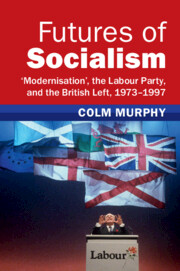Refine search
Actions for selected content:
41 results
4 - ‘If We Do Not Talk About These Issues Now …’
-
- Book:
- Governing the Past
- Published online:
- 30 July 2025
- Print publication:
- 07 August 2025, pp 95-123
-
- Chapter
- Export citation
Villagers as Victims: Different Views of Peasant Oppression in Eighteenth-Century Prussia
-
- Journal:
- Central European History , First View
- Published online by Cambridge University Press:
- 15 July 2025, pp. 1-18
-
- Article
- Export citation
Kase Hideaki's Revisionist Vision for Twenty-First-Century Japan: A Final Interview and Obituary
-
- Journal:
- Asia-Pacific Journal / Volume 21 / Issue 1 / January 2023
- Published online by Cambridge University Press:
- 14 March 2025, e1
-
- Article
-
- You have access
- Open access
- Export citation
Chapter 2 - The 1645 Poems
-
- Book:
- Milton's Ireland
- Published online:
- 14 November 2024
- Print publication:
- 12 December 2024, pp 58-80
-
- Chapter
- Export citation
8 - Clare and Ecocriticism
- from Part II - Clare the Naturalist
-
-
- Book:
- The Cambridge Companion to John Clare
- Published online:
- 14 November 2024
- Print publication:
- 21 November 2024, pp 120-134
-
- Chapter
- Export citation
4 - The Revisionists
-
- Book:
- Hiroshima and the Historians
- Published online:
- 30 May 2024
- Print publication:
- 06 June 2024, pp 91-124
-
- Chapter
- Export citation
10 - British Reformations Compared
-
-
- Book:
- Reformations Compared
- Published online:
- 14 March 2024
- Print publication:
- 21 March 2024, pp 214-241
-
- Chapter
- Export citation
Introduction
-
-
- Book:
- Reformations Compared
- Published online:
- 14 March 2024
- Print publication:
- 21 March 2024, pp 1-18
-
- Chapter
- Export citation
6 - The Politics of Secularism 1905–1914
-
- Book:
- Red Secularism
- Published online:
- 30 November 2023
- Print publication:
- 30 November 2023, pp 153-195
-
- Chapter
- Export citation
18 - From ‘Stereotyped Postures’ to ‘Credible Avant-Garde Strategies’
- from Part V - Modern Metal Genres
-
-
- Book:
- The Cambridge Companion to Metal Music
- Published online:
- 31 August 2023
- Print publication:
- 14 September 2023, pp 251-264
-
- Chapter
- Export citation
Conclusion: Contested Futures of Socialism in the Late Twentieth Century
- from Part III - The Search for a Modernising Social Democracy
-
- Book:
- Futures of Socialism
- Published online:
- 25 May 2023
- Print publication:
- 08 June 2023, pp 266-277
-
- Chapter
- Export citation

Futures of Socialism
- ‘Modernisation', the Labour Party, and the British Left, 1973–1997
-
- Published online:
- 25 May 2023
- Print publication:
- 08 June 2023
3 - Staging a Scientific Debate
- from Part II - Coming of Age during the Thaw
-
- Book:
- The Closed World of East German Economists
- Published online:
- 27 April 2023
- Print publication:
- 11 May 2023, pp 81-115
-
- Chapter
- Export citation
3 - Censorship and Restrictions
-
- Book:
- Artistic Freedom in International Law
- Published online:
- 06 April 2023
- Print publication:
- 13 April 2023, pp 68-98
-
- Chapter
- Export citation
Building a more robust framework on revisionism: a reply to Lawson and Legrenzi
-
- Journal:
- Italian Political Science Review / Rivista Italiana di Scienza Politica / Volume 53 / Issue 2 / July 2023
- Published online by Cambridge University Press:
- 06 February 2023, pp. 260-264
- Print publication:
- July 2023
-
- Article
-
- You have access
- Open access
- HTML
- Export citation
5 - The Institutional Tactics
-
- Book:
- China's Strategic Opportunity
- Published online:
- 28 July 2022
- Print publication:
- 11 August 2022, pp 142-177
-
- Chapter
- Export citation
1 - Strategic Opportunity and China’s Foreign Policy
-
- Book:
- China's Strategic Opportunity
- Published online:
- 28 July 2022
- Print publication:
- 11 August 2022, pp 1-27
-
- Chapter
- Export citation
7 - Conclusion
-
- Book:
- China's Strategic Opportunity
- Published online:
- 28 July 2022
- Print publication:
- 11 August 2022, pp 207-226
-
- Chapter
- Export citation
1 - Introduction
-
- Book:
- Ascending Order
- Published online:
- 21 July 2022
- Print publication:
- 04 August 2022, pp 1-27
-
- Chapter
- Export citation
2 - Conceptual Foundations
-
- Book:
- Ascending Order
- Published online:
- 21 July 2022
- Print publication:
- 04 August 2022, pp 28-54
-
- Chapter
- Export citation
